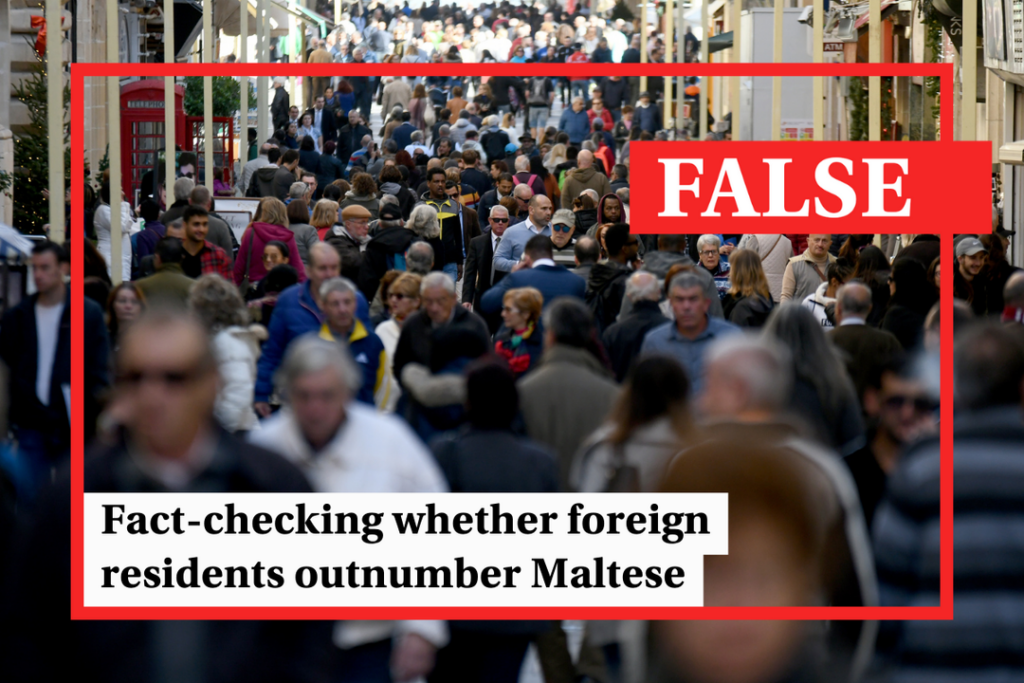A series of Facebook posts shared throughout the first week of August claimed that foreign residents now outnumber Maltese residents.
These posts cite an unnamed study “based on lease and rental agreements” which allegedly found that Malta now has a population of 450,000 foreign residents and just 400,000 Maltese.
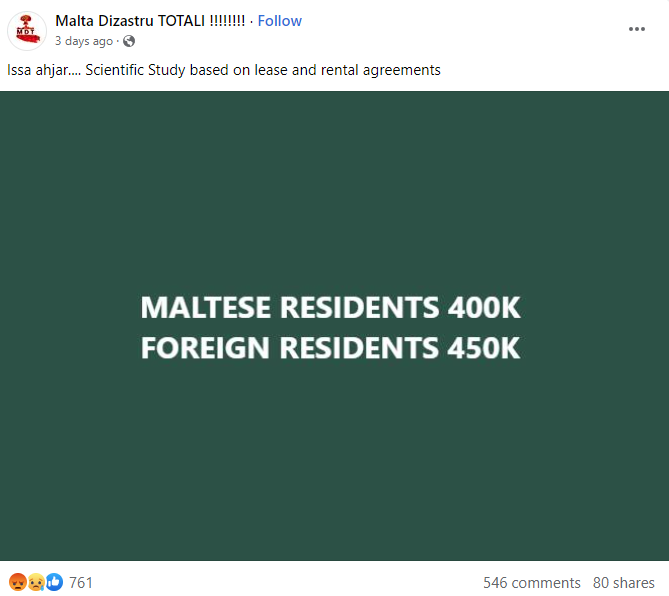
The claim was widely shared on social media throughout the past days, with several people taking to Facebook to express their shock over the finding.
It prompted wild speculation about Malta’s total population, with some baselessly saying that Malta’s total population is estimated to be over 820,000.
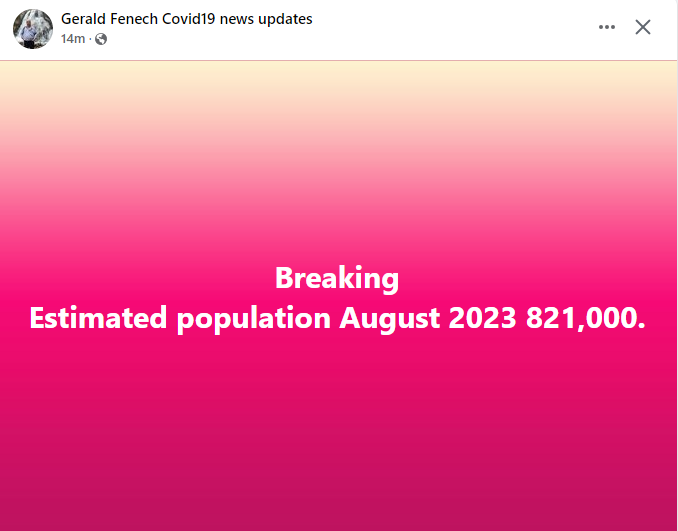
However, others were more sceptical, asking for the source of the figures and requesting to see the study being cited.
Times of Malta received several requests to verify whether foreign residents really outnumber Maltese and whether similar claims about Malta’s population were true.
Does the study mentioned in the Facebook posts actually exist?
Not as far as anyone can tell.
Despite the posts being widely shared and commented upon, neither the authors of the posts nor the commenters were able to ever point to the study.
The National Statistics Office has not published new data on lease and rental agreements of late.
On the other hand, the Housing Authority did recently publish new data, issuing its annual report on the private rental market in July.
However, it is unclear whether this Housing Authority report is the study being referred to in the Facebook posts, as the scope of the report is different to that suggested in the posts.
What does the Housing Authority report say?
The report looks into how many properties are being rented out around Malta, finding that the number has increased by almost 10,000 in a year to now reach 47,879.
However, this is not a particularly useful way to determine the number of foreigners in Malta for several reasons.
Firstly, this figure includes rentals by both Maltese and foreign tenants. The report does not provide a breakdown of tenants’ nationalities, making it impossible to accurately estimate how many of them are foreign nationals.
Secondly, these figures look into the number of rental contracts, not the actual number of people living within each property.
Overcrowding appears to be increasingly widespread, with some extreme examples of exploitative living conditions being reported, such as the case of the Sliema apartment which houses around 40 people.
While cases such as this are not believed to be the norm amongst all rental properties, the Housing Authority admits that “over-crowding is more prevalent with third-country nationals, especially those from African and Asian ethnicities”.
Nonetheless, the report reveals that the most popular localities for rental properties are also the localities that have the largest foreign populations, such as St Paul’s Bay, Sliema, Gzira, Msida and St Julian’s. These five localities alone contain around 40% of all rental properties in Malta.
What do official population figures show?
The most recent population data for Malta, issued in early July to coincide with World Population Day, says that Malta had a total population of 542,051 by the end of 2022.
Of the total population, 404,675 people are Maltese citizens while 137,376 are foreign residents.
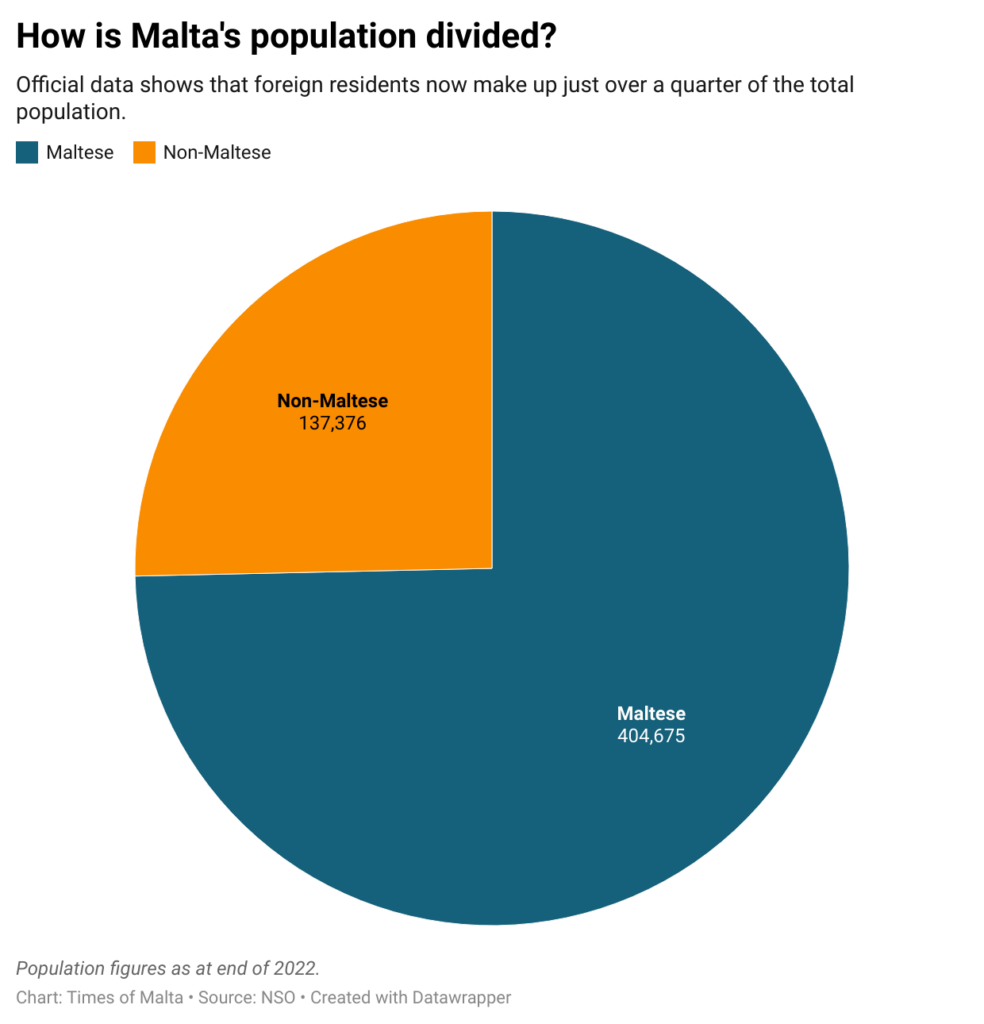
This means that the Facebook post claims that the number of foreigners in Malta is more than three times higher than what official data shows.
Are more people coming to Malta than leaving?
Yes, quite dramatically so.
In 2022, Malta welcomed almost 35,000 new people to its shores, almost three times as many as the 13,000 people who chose to leave the island.
Curiously, while the number of foreigners who came to Malta outnumbers those who left, this is also true of Maltese citizens.
In fact, a little over 1,800 Maltese citizens returned to live in Malta in 2022, significantly higher than the 780 Maltese who left.
Nevertheless, it is clear that Malta’s population growth is being driven by third-country nationals, who made up almost three-quarters of all new immigrants in 2022.
In total, almost 26,000 new third-country nationals chose to come to Malta throughout the year, far outnumbering the almost 8,000 who left Malta.
A further 7,110 newcomers were EU citizens, while just over 4,500 EU nationals left the country.
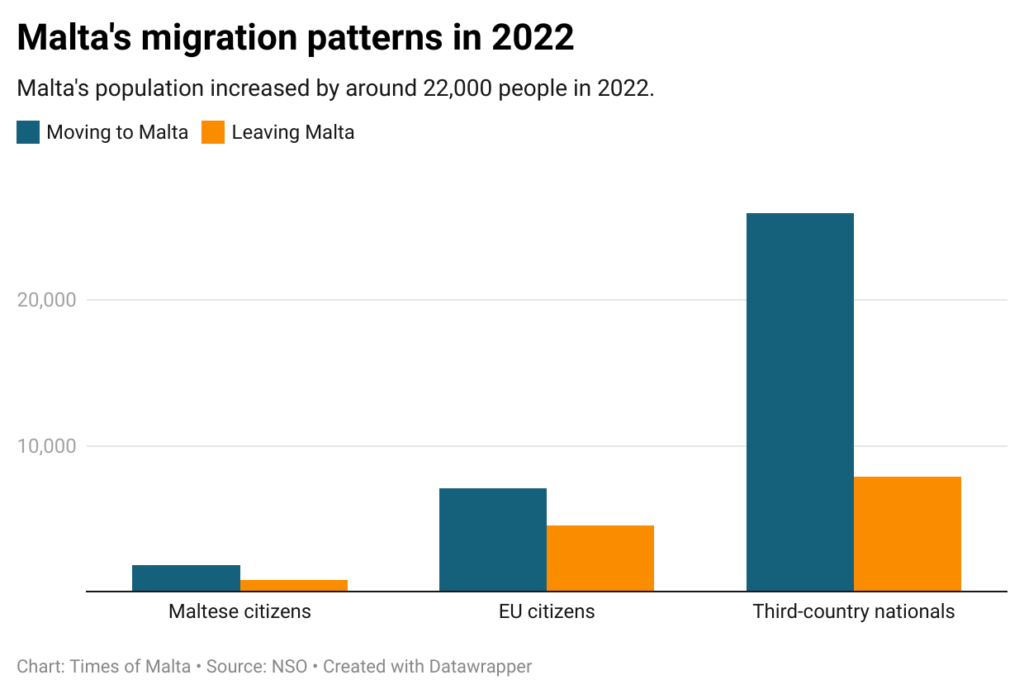
Calculating the difference between people who left Malta and those who migrated to Malta, suggests that the country’s overall population increased by some 20,700 foreigners in 2022, together with 1,000 Maltese citizens.
Could the real figures be higher than reported?
Some argue that official figures are just the tip of the iceberg, saying that the real picture is quite different. Official data, they argue, is not entirely accurate and some people slip through the cracks.
There may be an element of truth to this, but it would still not explain the discrepancy between official population figures and those made on Facebook.
While undercounts (or even overcounts) in census and population estimates around the world are not impossible, they are usually relatively minimal and nowhere near enough to suggest that foreigners in Malta may outnumber Maltese.
The Pew Research Center found that the most recent US census overcounted the white population by 1.6% and undercounted Hispanic and Native American populations by some 5%. A separate study by PRB, an independent research centre, came to a similar conclusion. The same is true of European population estimates.
For foreign residents to outnumber Maltese, Malta’s official data would have had to undercount Malta’s foreign population by around 66%, an unheard-of figure across similar statistical studies.
NSO director general Etienne Caruana told Times of Malta that Malta’s data collection methods for population estimates are in line with European legislation and guidelines for demographic and migration statistics.
Caruana explained that the population counts use several administrative sources, including the Directorate for Health Information and Research, Jobsplus, Identity Malta Agency, Community Malta Agency and the International Protection Agency to accurately estimate the population.
“When required, mathematical models and other auxiliary sources are used to estimate components of the population when administrative sources are not available.
“All estimates related to the resident population adhere to the usual residence definition which stipulates that a person should be considered a resident if they have lived in the geographical area for a continuous period of at least 12 months or if they intend to reside for at least 12 months. This, therefore, excludes tourists or short-term migrants from the count of the resident population.”
Verdict
Malta’s foreign population officially stands at just over 137,000, significantly lower than the 450,000 claimed.
Although population estimates around the world have reported slight over or undercounts, these are nowhere near the margin required for foreign residents to outnumber Maltese.
Malta’s data collection methods are in line with international standards and guidelines.
The study on which the claim is based has never been revealed and appears to not exist. A similar study on lease and rental agreements was indeed published by the Housing Authority in July, but does not make any reference to the number of foreign residents in Malta.
This claim is therefore false, as the evidence clearly refutes the claim.
The Times of Malta fact-checking service forms part of the Mediterranean Digital Media Observatory (MedDMO) and the European Digital Media Observatory (EDMO), an independent observatory with hubs across all 27 EU member states that is funded by the EU’s Digital Europe programme. Fact-checks are based on our code of principles.
Let us know what you would like us to fact-check, understand our ratings system or see our answers to Frequently Asked Questions about the service.

